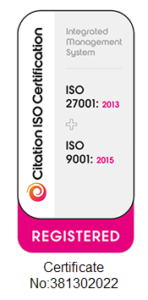Breaking Down Access to Knowledge Barriers through Virtual Conferences
“In the VC (virtual conference) format, researchers are much more likely to be able to overcome economic and travel-related barriers that are intrinsic to IPCs (in-person conferences) and that ultimately discourage participation from institutions and countries with limited resources, women, disabled scientists and early career researchers and practitioners.” – Conference demographics and footprint changed by virtual platforms
Virtual meetings are shaking up the status quo, bringing opportunities to tap into the latest research and connect with others in the same field to far more people than ever before. A recent paper published in Nature Sustainability found virtual conferences significantly improve access based on several key factors, including cost, gender, career stage and geographic location.
What we’ve found is just how vast the reach can be when running a virtual conference. In the past 12 months, we’ve reached 149 countries in virtual meetings. Had those been in-person meetings it is unlikely you get that spread of attendance. What we’re seeing in many healthcare conferences and meetings is that you’re now getting aspiring specialists and generalists, not just leaders in a particular field, which means the sessions are now both more accessible and more equitable. It means people who would previously not have been able to attend are joining conferences and benefitting from the information shared.
Sometimes there will be groups of people gathered in the same location, all joining from a single registration for a specific topic. While theoretically this might not be considered done, it does mean health professionals who might previously have missed out are able to join. For example, you might have nurse specialists joining sessions that previously would only have physicians, allowing a wider cohort of people to hear from expert presenters.
Virtual conferences also make it easier for participants to join for certain sessions or learning streams rather than the whole conference. This is made easier still by video-on-demand, which not only allows participants to focus on their areas of interest but also opens these sessions to people who might otherwise struggle to participate, such as single parents or women who are juggling career and young children. Again, in the traditional in-person model, such sessions would never have been made available on-demand and as such would have remained out of reach to many people.
From unintended to intentional outcomes
To date, many of the benefits of virtual – accessibility, reduced carbon footprint, reduced financial burdens and less interruption – have been unintended consequences of the Covid-19 requirements. To truly move forward and ensure greater involvement, these need to become intentional objectives.
What, though, would conferences that are intentionally seeking to open up to a wider audience look like? How do you actually go out and target those who wouldn’t come in normal circumstances? Does that mean having differential pricing, such as reduced rates for attendees from developing nations? Furthermore, should you be considering how relevant your content is for all participants?
For example, if you are actively seeking to attract participants from developing countries, you might need to think about the relevance of content that talks about expensive, state-of-the-art medical technology to treat certain conditions. Instead, your sessions need to include content that has more relevance to the occasional user or to those who are not going to have access to expensive equipment.
There is growing evidence that conference organisers are at least considering alternative tracks, such as a junior’s day before the start of the main conference or a basic techniques day that covers essential surgical techniques rather than the latest cutting-edge developments. The point is, don’t aim your content at just the most experienced specialists in developed nations that have access to the latest technologies. Consider what skills and techniques are needed when resources are limited and build sessions around that.
Time and language barriers
There are two other important considerations if you are seeking to expand the reach of your virtual conferences: time zones and language.
We ran a meeting recently on behalf of Australian faculty that touched 90 countries across multiple time zones. In these situations, you need to start thinking about running sessions across three time zones and making sure sessions are advertised accordingly. For example, you might have a meeting that people in the Asia Pacific and US Eastern states can’t attend and another that people in Europe and Asia Pacific can attend.
Another huge consideration is language. If you’re only running sessions in English, you’re restricting access to those comfortable learning in English and completely ignoring the large percentage of people who speak basic or no English at all. There are more examples of people running conferences in more than one language but typically it tends to be English and Spanish or French and German.
We have delivered sessions in nine languages simultaneously, so we know it’s very doable. It does cost more and it’s more complex, but if you start with the principle that you want to educate the world, then it’s something you’ve got to do. There are many tools out there that allow you to offer more language options, you must make that investment and take the time to broaden your reach.
Virtual sessions are helping to break down barriers and enabling greater access to knowledge in multiple fields. If conference organisers want to truly break down barriers, they need to consider their sessions, their pricing and their audience when designing their conferences.
About the author
Leslie Robertson is the Founder of Open Audience, an audience engagement consultancy that specialises in making life sciences meetings more engaging with more positive, successful outcomes – whether in-person or in the virtual space. The Open Audience team helps to strategise and prepare pre- and post-meeting as well as providing real-time support and guidance during the meeting. Open Audience also offers customisable, multilingual engagement platforms that include interactive polling, surveys, and ideas exchange.

